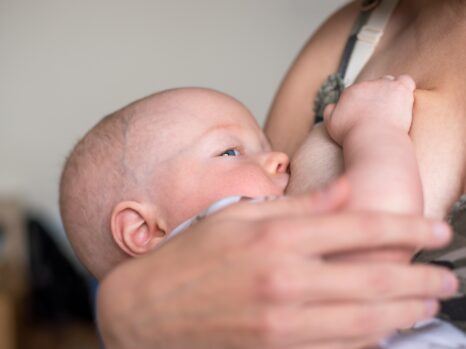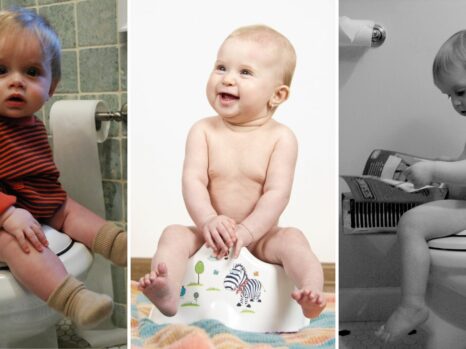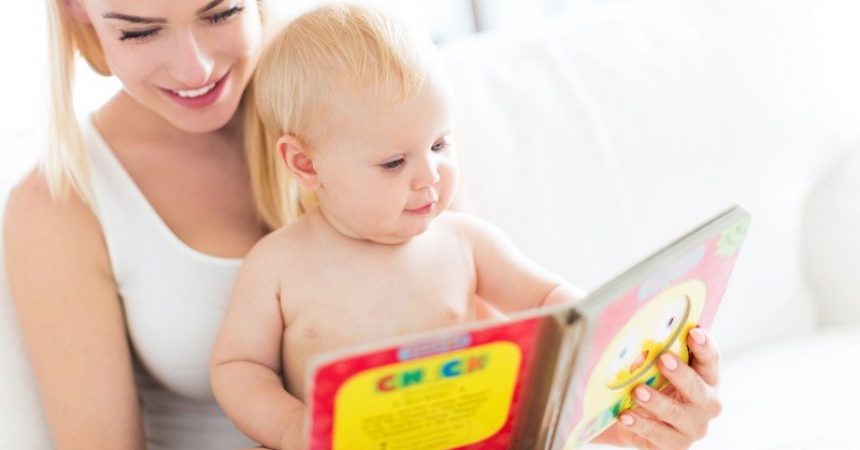The journey of speech starts immediately when a baby is born. The acrid cry the baby makes shortly after delivery not only opens up the lungs but also brings hope of speech.
The joy of a mom hearing her baby babble the first word is still unexplainable. Teaching your baby the way of speech is not an overnight assignment.
It is a gradual process that requires patience. The mom’s smile broadens milestone after milestone of the baby’s speech and language development.
This journey is not quite easy, it requires everyday commitment.
Let’s divide this topic into several subtopics for better understanding.
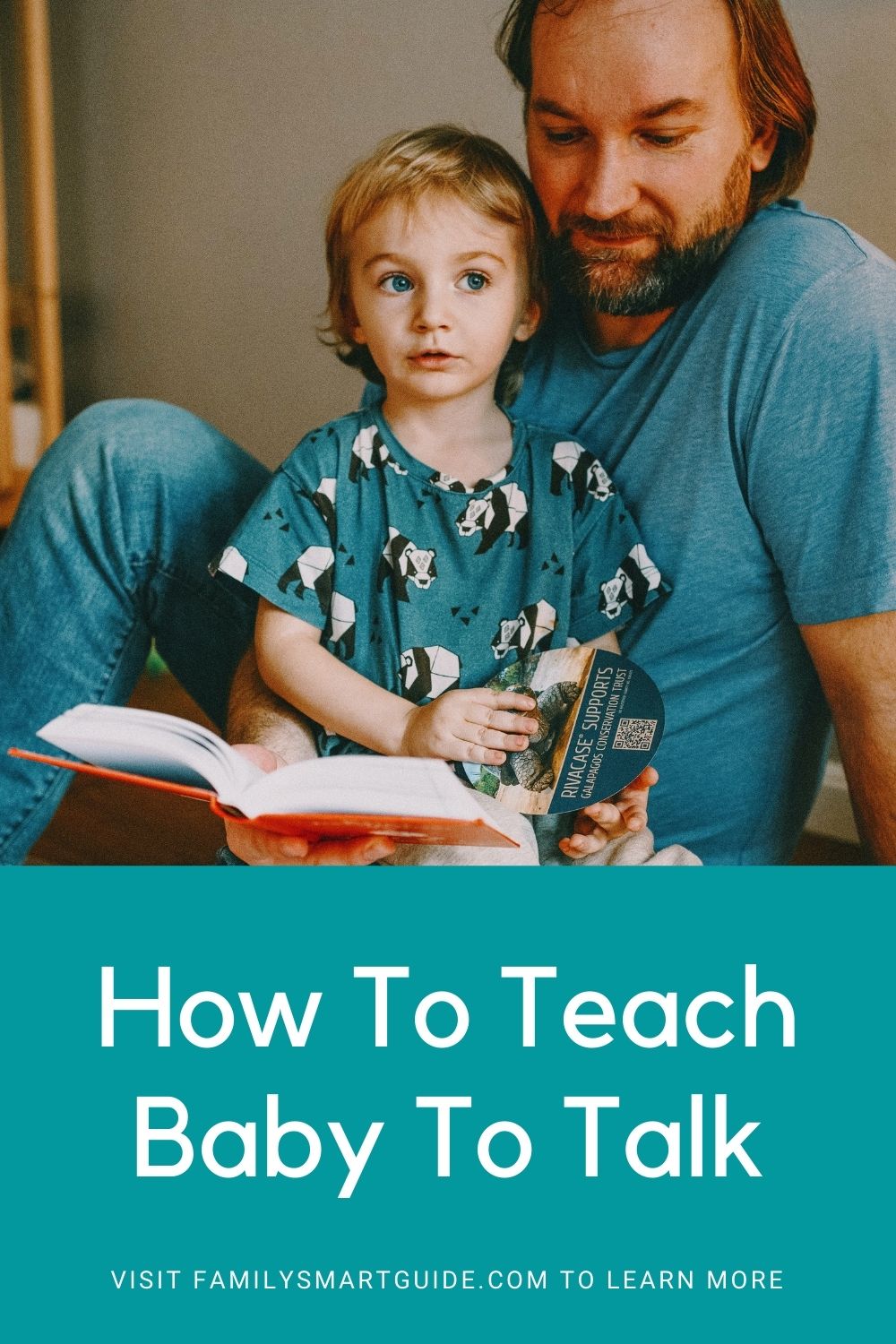
TEACHING HOW TO TALK 1 TO 3 MONTHS OLD BABY
The first milestone in speaking happens immediately when a baby is born.
A sharp resistance cry to this new world opens up the lungs and the speaking possibilities.
Right from this early age, sounds should be introduced to the baby to lure his senses of hearing and speaking.
These are the steps to follow in teaching your 3 months old baby how to talk.
Sing to your baby

Research holds that as early as from birth, babies have the reception to sound though they can’t get the meaning.
Whenever babies become restless and start crying, most nursing mothers sing soothing lullabies and the babies fall asleep.
Do you think this is a miracle? No. Their brains though small find soft sounds relaxing. With time as the baby grows older, he will start relating the lullabies.
Talk to your baby

We have already talked about the baby’s special power on receipting sounds around them. Hold your baby near and talk to him gently.
Of course, he won’t understand what you are trying to tell him but will hear your voice. He will get happy and smile.
However, note that the talking should be very gentle to avoid provoking him.
Let him listen to other voices
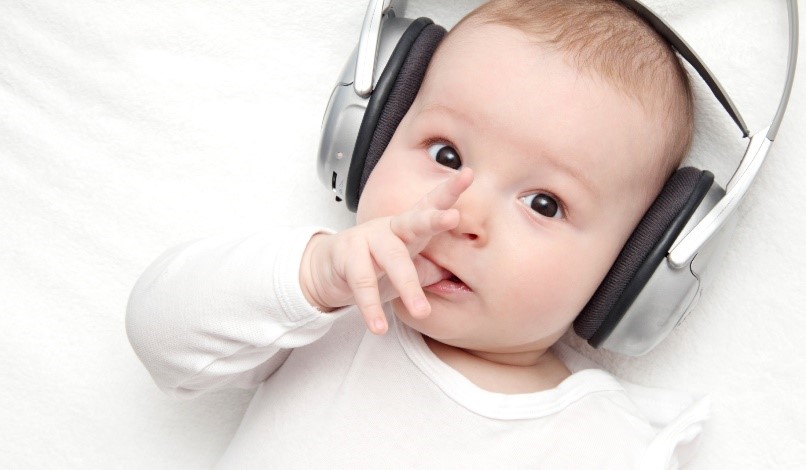
Do not enslave your baby in the bedroom. Occasionally, let the other family members interact with the baby.
Household noises are recommended because they are varied. From the noises of conversations, the tv, the vacuum cleaner, etc., there is much for the baby to listen to.
Make sure the baby is looking at you while you are speaking
Hold your baby in your arms and talk to him when he is awake and active.
Let him notice the movement of your lips as you speak. He will find it funny and smile. With time, he will try to do the same and will end up cooing.
Let a woman’s voice nurse the baby rather than a male’s
This may sound like a myth. But the truth is that there is medical backing that babies prefer a woman’s voice over a man’s.
This is because women’s voice is often soft and soothing and definitely entertaining to listen.
On contrary, men’s voice is coarse and normally not luring to babies. If your baby will love listening, it is an assurance that he will love speaking later on as he grows older.
TEACHING HOW TO TALK To 3-6 MONTHS OLD BABY
The baby has already started developing listening abilities. He can realize when there is sound around him.
Make your baby observant
since your baby can realize when there is noise arouse around, make him take a look at the source of the sound.
When someone opens the door, make sure that you turn him around to notice that.
You can point the tv when you are watching a program for him to know that the noise is originating from.
Play cool music
The baby has already heard your sweet voice sing. It is now time to extend what he should listen to.
This will even relieve you from singing especially if your voice is nowhere near ‘Camila Cabello’s.’
Choose a classical baby playlist that is relaxing to listen to.
When your baby babbles, imitate the sounds
As the baby is trying to play around with his lips, he will end up bubbling.
Imitating these sounds will give your baby the morale to do the bubbles again and again.
He will find it funny and will enjoy the mimicking game.
Let your baby mimic you instead
If the baby is not willing to start the bubbling and imitation game, do it yourself. Make babbles and let him repeat after you.
You have to be so gentle on the baby to lure him to play this game with you. Also, time when he is active and in a happy mood.
Try facial gestures

Start teaching the baby the different facial gestures and their meaning.
The learning should be conducted gradually and regularly.
Look at your baby and pose a huge welcoming smile.
If he smiles back, he is learning! Frown and point at him and let him know you are not happy.
Facial gestures will aid him in learning how to talk.
TEACHING HOW TO TALK To BABY AT 6 TO 9 MONTHS
At this age, your baby can play with sounds. The baby’s senses are developed and he can differentiate happy voices from angry ones.
He smiles back to a smiling mother and gets unhappy when someone shouts at him.
Here are tips on how to teach a 6-month-old baby how to speak.
Give your baby a doll or a toy

Your baby is always observant on how you nurse him. He will try to replicate the same to the doll.
He will end up making conversions (though through cooing and gurgling) to his little baby (doll) as he plays.
Ask your baby questions

Have lovely interactions with the baby. Take him to the yard and ask him questions like, “where is the doggie? Where is the tree? Where is the car?” if he does not respond, show him where what you are asking for is.
Play games together
Play games like pick-a-boo or pat-a-cake. Pick-a-boo is a game in which the mom hides her face with her hands, pops back to the baby, and says “I see you!”
Research by developmental psychologists reveals that this game helps the infant to understand object permanence.
Let the baby stand in front of a mirror
Point at him and ask, “who’s that?” if he fails to respond, say his name. now, point yourself in the mirror and ask him the same question. Gurgle the word “mom” and keep repeating it lyrically.
Plan quiet time for the baby
Let the baby play independently without tv or other household noises.
As he is playing alone, he will try babble the words he has been learning all through.
When someone is closely watching you do something, you probably feel shy.
This in extend applies to babies. Let him play at a safe distance from anyone so he can feel the quietness around him.
TEACHING HOW TO TALK To 9 TO 12 MONTHS OLD BABY

Congratulations! Your baby is almost hitting the 1year milestone.
At this age, he can understand simple words. This is the time to engage your baby in diverse ways of developing the ability to talk. This includes:
Use simple words to talk to him
When he stretches to do an ill, look at his face sternly and tell him “no-no.” he will stop and look at you and understand that that should not be done.
Continue engaging him with questions
Questions always aim at getting answers. This time let someone else do the questioning. When your baby is asked “where’s mummy” he will turn around and look for you.
Introduce your baby to the family members frequently
“Grandma, daddy, auntie…” point each of your family members, making sure your baby is watching you.
Mention their names at least thrice for the baby to grasp them. Repeat this regularly or even daily for the baby to get to know them by their names.
Embrace sign language
At this age, your baby will be making signs to convey what he wants. When he lifts his arms, take a nod to accept his request of wanting to be held on the arms.
If you are leaving, wave a bye-bye to him and hold his hand to help him replicate the waving.
TEACHING HOW TO TALK To 12 TO 15 MONTHS OLD BABIES

Though far from being fluent, babies at this age begin using words. The first words that baby utters are the ones that were always consistently been said to him since he started learning how to speak.
You can help your baby continue learning how to talk by:
Talk about things he can relate to
“This cup is beautiful! This doll looks amazing! This food is so sweet.” These are kinds of statements you should be making to your baby.
Your baby is still learning to take solid foods and drinks, so when you talk of things like cups and food, he will relate.
Combine the gestures with words
Prepare different types of purees and bring them all to the baby. Ask him to choose what he wants to eat. He will point and try reaching for it.
Feel free to use hand gestures to complement what you are telling him. For example, stretch your arms ready to receive him when you tell him, “come.”
Keep on asking your baby questions
Secretly take the toy and ask your baby where he had placed it. He will look for the toy and fail to get it. He will then look at you and try to babble an explanation.
Similarly, ask him about the objects within his vicinity. He will point at them or even try to reach for them.
Smile or clap your hands when your child names correctly things around you
This will motivate him to continue learning new words. He won’t forget the little he knows because he will realize that mom is appreciating!
Similarly, when he mentions something, talk about it briefly. “Yes, this is doggy! He is so big. For our case here, the baby won’t forget the word ‘doggy’.
Let your baby control you
Talk about what your baby wants to talk about. This freedom of topic choice will help him to gradually learn what his mind can take. Do not cut him short as he babbles his words. Make the conversation lively, but ensuring that much input comes from the baby.
Introduce pretense play to the baby
As you play with the baby, add your baby’s favorite toy or doll to the game. Think of a trick that will transmit the baby from playing with you to playing with the toy or doll. As he plays with the dolls, he will babble words to them.
TEACHING HOW TO TALK To 15 TO 18 MONTHS OLD BABY

The baby is continuing to build his vocabulary. His gestures become more complex and communication is now much easier.
He can now make simple demands using words. He may take your hand and look at you and say, “food” to signal that he is hungry and needs food to eat.
You can help your child talk by:
Engaging a conversation
Start a face to face lively chat. Tell him “show me your eyes.” Point on your own eyes and watch him point his too. Do this with the major body parts such as head, knees, toes, mouth, and nose.
Get a book with lively pictures
A baby storybook or any other written material with cartooned pictures will be good for the learning of your baby. Ask the child questions about the pictures.
Do not be quick to assist him in analyzing them. Let him think and give you his responses. Good future readers are natured this way.
Play the baby’s hide and seek
Hide objects such as dolls and toys while he is watching. Take a seat and ask him to find it. Let him crawl towards where you placed the book. If he gets it, show him your delight-hug and celebrate him.
Advance your explanations
When he mentions something, try to give a detailed but simple-to-understand complement. When he hands you a toy, talk about it. “Thank you for giving me the toy.
You must be tired of playing. Ooh! This toy got a crack. Its wheels are not stable. Come and see.”
Let your baby interact with visitors and other family members
There are obvious questions that a guest will ask your toddler.
Some of the most common questions guests ask babies include; ‘what’s your name, where is mummy? Where is your toy? Where are your shoes?’
you can listen, your baby been interrogated, and get to know the progress he is making in speaking.
TEACHING HOW TO TALK To BABIES OF 2 TO 3 YEARS OLD

Language skills improve with age. At 2 or 3 years, he will have the ability to string several words together and construct a simple sentence.
You will see that he will be able to answer simple questions such as “where is your toy?” “have you eaten?” since he can now walk on his own, he will also spend most of his time playing on his own.
He will fix his Lamborghini (toys) and take care of his property (dolls and toys.)
You can help your child to be fluent with the words he is learning by:
Ask your baby open-ended questions that do not have a ‘yes’ or ‘no’ answer
This will help him develop ideas and learn how to express them. You can ask about anything that is within the vicinity.
For example, if you are basking in the yard, and you spot some birds on a nearby tree, you can ask questions about them. “look at this tree, what can you see on the branches? How many birds can you see? What are they doing?” look at the baby and watch how he react.
Give him time to think and listen to his answers. Correct him where necessary.
Buy your child baby storybooks
Help him read the whole of the storybook as you explain the meaning of the new vocabulary. Analyze the pictures too.
After going through the book severally, let him read it on his own.
Later ask him to narrate the story he read in the book. “What happened to the little hare?” take your time and listen to what he can remember.
Let your baby interact with other babies in the hood
Allow him to play with the neighbor’s children. Together, they will share and do much.
The baby will develop confidence while speaking to other people who aren’t related.
The baby’s self-esteem will be boosted when he learns that he can communicate and be listened to.
Interacting with other babies will also give him the chance to learn new words and vocabulary.
Allow your baby to watch cartoons and baby animations
The tv has cartoon programs on daily basis. There are even cartoon exclusive channels. Allow your baby to watch these programs as they serve dual purposes.
First and obvious, he will be entertained and kept busy. The other advantage is that he will get exposure to what happens to the cartoon characters and get to relate and incorporate that in his thinking and talking.
Nowadays, life is digital. You dint have to rely on the tv for your child to enjoy watching baby content.
You can download the YouTube for kids from play store or App store on your phone or tablet and let your kid enjoy.
Teach your baby to say his full names
At 2 or 3 years, your baby should have the ability to express himself fully. Keep telling him his names until he learns how to pronounce and remember them.
Incorporate all that worked earlier
Do not overrule the tips we already talked about previously. Embrace them all as you teach your baby how to talk.
DELAYED SPEECH AND LANGUAGE DEVELOPMENT
The age at which babies start learning and talking varies. Most babies babble “mama” or “papa” before their first birthday. By the time they are 18 months old, they can say around 20 words.
When should you start worrying about delayed speech?
Well. You have to know what is normal and what is not. Most importantly, you have to note the difference between speech and language.
- Speech is the verbal and oral expression of language. It involves the correct articulation of words.
- Language is the entire system of communication, that is; giving and receiving information.
Signs of speech and language delays
If at 9 months your baby can’t vocalize or respond to sound, visit a doctor right away.
Have a look –
WHEN TO START WORRYING
12 Months
- Cannot use gestures such as waving or pointing.
18 Months
- Prefers to use gestures over vocalizations.
- Has trouble in babbling sounds.
2 Years
- Cannot connect two words.
- Has breathing difficulties while talking.
- Cannot follow simple instructions.
- Has no interest in listening and speaking.
3 Years
- If the baby can not compose a simple sentence.
- If the baby can not answer a simple question.
- If nobody understands whatever the baby is talking about.
Causes of speech or language delay
Problems with the mouth
Language and speech delay can be due to issues with the mouth, palate, or tongue. This condition is referred to as ankyloglossia.
The tongue is usually connected to the lower part of the mouth. If the tongue is ‘heavy’, it will be difficult for the baby to pronounce sounds.
Hearing impairments
In most cases, if one has a hearing loss, he or she cannot speak. You hear first then you speak. visiting your doctor will be of much help.
Neurological complications
Brain misfunctions might lead to delayed speech and language development.
According to a medical journal, the common disorders that affect brain muscles include muscular dystrophy, traumatic brain injuries, and cerebral palsy.
Intellectual retardations
Your child might have a speaking disability due to cognitive issues in the brain.
DIAGNOSIS OF LANGUAGE DEVELOPMENT RETARDATIONS
It is usually a challenge to distinguish between delays and disorders because babies achieve speaking milestones differently.
Make visits to pediatricians regularly for baby’s speech and language development to be monitored.
Even if your baby seems progressing well in learning how to talk, it is advisable you still visit the pediatrician.
Early diagnosis of this condition can be corrected.
TREATMENT OF SPEECH DELAYS
Our research found 3 ways on how speech delays are handled.
Speech-language therapy
This is always the first remedy for this condition. The speech-language therapist will aid your child in articulating words correctly.
By the time you enroll him in school, he will have the ability to make a normal speech.
Early interventions
Early diagnosis calls for medication attention when the condition can be turned around.
Your child will be enrolled in early intervention services where the experts will closely monitor him and correct the situation.
Seeking treatment for the underlying conditions
We already mentioned that hearing impairments delays speech. Correcting such disorders might help in speech development.
Correcting physical complications with the tongue and managing neurological disorders will be vital in addressing this issue.

